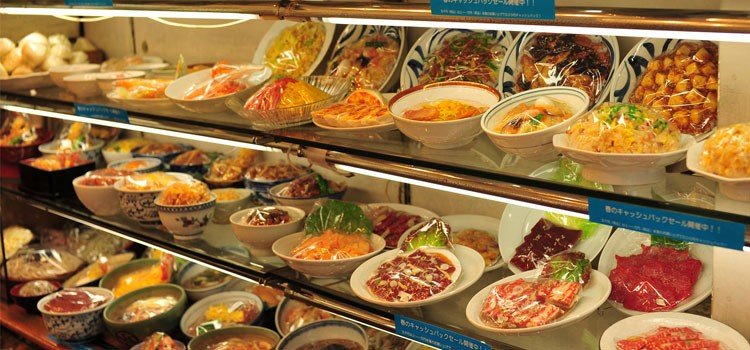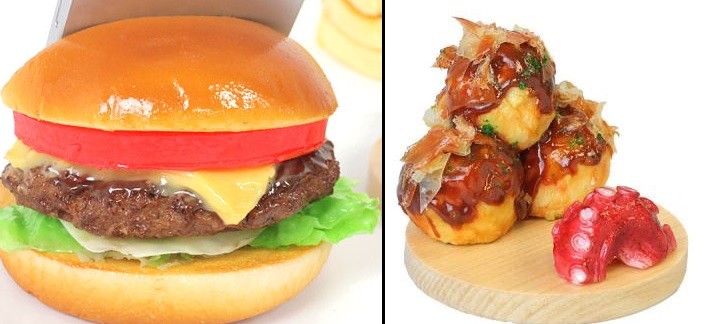In Japan, it is common to find restaurant displays showcasing dishes that look like they just came out of the kitchen. But upon closer inspection, you discover that they are food replicas, known as Tabemono no Sanpuru (食べ物のサンプル). These samples, created with an impressive level of detail, are designed to mimic real dishes, serving as a blend of art, marketing, and functionality.
With historical origins and technological evolution, food replicas play fundamental roles, not only in restaurants but also in other sectors. Let's explore more about how they emerged, how they are made, and what they are used for.

Table of Content
The History of Food Samples in Japan
Food replicas have their roots in the late 19th century. At that time, many Japanese restaurants began to adopt the practice of displaying dishes to attract customers. However, using real food as a sample presented significant challenges, such as waste due to heat, humidity, and even attacks from insects and animals.
It was in the 1920s that the first replicas began to be made of painted wax. Although effective, these versions were still not ideal, as they melted at high temperatures. The true revolution came with the use of vinyl plastics in the mid-20th century, bringing durability and a realism never before achieved.
Today, Japan leads the world in the production of these replicas, with specialized companies investing in technology and manual techniques to create unique pieces.

How Food Replicas Are Made
The process of creating food replicas is meticulous and handcrafted. Each item is produced individually, involving stages that combine creativity and technical precision. Here is an overview of the process:
- Molding: The first step is to create a mold using real food. For a sandwich, for example, each ingredient – bread, lettuce, tomato – is molded separately.
- Painting and Detailing: After molding, the pieces are manually painted to achieve the perfect color and texture. Details such as the shine of a sauce or the crispy texture of chicken skin receive special attention.
- Mounting: Just as assembling the real plate, the parts are joined to form the final item. At this stage, the artist ensures that everything looks natural and appetizing.
In addition to the technical process, there is a commitment to perfection: each replica must be as appealing as the real dish.

Uses and Applications of Replicas
Marketing in Restaurants
The most well-known use of replicas is as a marketing tool in restaurants. In display windows or next to the menu, they help customers visualize the dishes offered, especially for tourists who may not understand the Japanese language. The realistic appearance conveys quality and reliability, directly influencing the customer's choice.
Education and Research
These samples are also used in educational contexts, such as nutrition and health classes. With them, it is possible to demonstrate ideal portions or teach about the ingredients of certain dishes.
Props for Entertainment
Movies, series, commercials, and theater plays often use these replicas to avoid using real food during filming. This way, scenes involving food can be filmed repeatedly without waste.
Toys and Decoration
In addition to the display cases, miniatures of these replicas are turned into keychains, refrigerator magnets, and even collectible items. These small objects are popular among tourists and enthusiasts of Japanese culture.

The Art Behind the Replicas
Creating a perfect replica requires skill comparable to that of preparing the real dish. The artists responsible are trained to reproduce every detail with precision, from the translucence of a slice of watermelon to the shine of sushi rice. This dedication has transformed food replicas into a form of art, with exhibitions and competitions that celebrate the creativity and innovation of this practice.
Renowned companies like Iwasaki Be-I and Ganso Shokuhin Sample-ya are pioneers in this sector, offering thousands of options that meet the demands of different audiences and markets.

Curiosities About Food Replicas in Japan
- High Cost: A customized replica can cost as much as the real dish or even more, due to the detailed work involved.
- Exportation: Other countries, especially those with large Japanese communities, have also adopted the practice of replicas for restaurants.
- Museus: There are museums in Japan dedicated exclusively to the history and technique of creating replicas, such as the Ganso Sample Museum in Tokyo.
Wrapping Up
Food samples in Japan are more than just commercial tools; they are a combination of art, functionality, and cultural tradition. The next time you pass by a Japanese restaurant display and are captivated by the dishes, remember: behind that perfect appearance, there is craftsmanship that demonstrates the Japanese commitment to quality and detail.
Whether in art, marketing, or entertainment, food replicas continue to enchant people around the world, proving that even plastic can whet our appetite.
